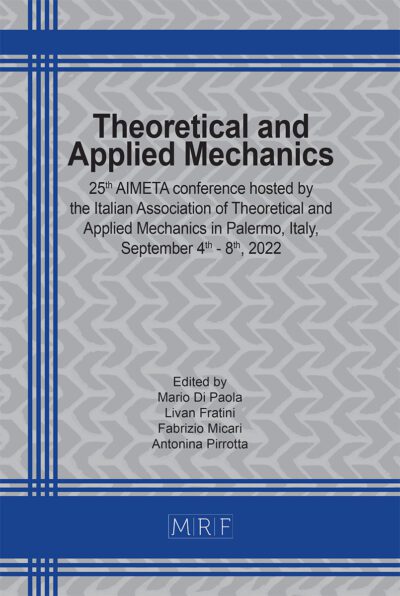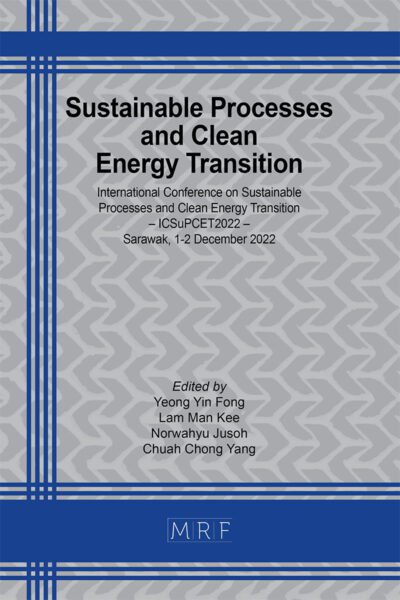AI supported process optimisation in a multi-material cup backward extrusion process chain
Eduard Ortlieb, Hendrik Wester, Johanna Uhe, Bernd-Arno Behrens
Abstract. Fluctuations in process parameters are a significant cost driver in hot forging. Particularly in multi-stage processes, fluctuations in the early process steps can lead to components having to be declared as scrap. Especially in the processing of hybrid components, these fluctuations pose a major problem, as the manufacturing costs are higher and the joining zone properties, which are very susceptible to process fluctuations, have a strong influence on the properties of the resulting component. The aim of this work is to develop an AI-supported solution for inline parameter optimisation. This approach allows for the compensation of process fluctuations by adjusting subsequent process steps, in order to still achieve end products that meet the requirements. FE-Simulations were carried out, whereby the boundary conditions for the induction current and the press speed were each varied by multiplying the original time curves with a normal distributed factor in order to simulate process noise. The resulting data was used to train a machine learning model that predicts the maximum first principal stress as indicator for the condition of the joining zone and the contact from the semi-finished product to the workpiece as indicator for mould filling. An evolutionary algorithm was used to optimise the press speed and the stroke in order to maximise contact and minimise the maximum first principal stress. Finally, the prediction time was minimised while maintaining the prediction accuracy. The approach presented promises a significant reduction in waste by enabling dynamic and predictive adjustment of process parameters in real time. This not only leads to an increase in efficiency, but also to a reduction in costs in the manufacturing process.
Keywords
Machine Learning, Process Optimisation, Cup Backward Extrusion
Published online 5/7/2025, 10 pages
Copyright © 2025 by the author(s)
Published under license by Materials Research Forum LLC., Millersville PA, USA
Citation: Eduard Ortlieb, Hendrik Wester, Johanna Uhe, Bernd-Arno Behrens, AI supported process optimisation in a multi-material cup backward extrusion process chain, Materials Research Proceedings, Vol. 54, pp 889-898, 2025
DOI: https://doi.org/10.21741/9781644903599-95
The article was published as article 95 of the book Material Forming
![]() Content from this work may be used under the terms of the Creative Commons Attribution 3.0 license. Any further distribution of this work must maintain attribution to the author(s) and the title of the work, journal citation and DOI.
Content from this work may be used under the terms of the Creative Commons Attribution 3.0 license. Any further distribution of this work must maintain attribution to the author(s) and the title of the work, journal citation and DOI.
References
[1] J. Repalle and R. V. Grandhi, “Design of forging process variables under uncertainties,” J. of Materi Eng and Perform, vol. 14, no. 1, pp. 123–131, 2005. https://doi.org/10.1361/10599490522248
[2] E. Ortlieb et al., “Big Data in der Massivumformung. Carbon Footprint Tool zur Messung und Erfassung von Halbzeug-und Werkzeugtemperaturen,” 2023.
[3] Zakaria Allam, Eric Becker, Cyrille Baudouin, Régis Bigot, and Pierre Krumpipe, “Forging Process Control: Influence of Key Parameters Variation on Product Specifications Deviations,” Procedia Engineering, vol. 81, pp. 2524–2529, 2014. https://doi.org/10.1016/j.proeng.2014.10.361
[4] Patrick Link, Lars Penter, Ulrike Rückert, Lars Klingel, Alexander Verl, and Steffen Ihlenfeldt, “Real-time quality prediction and local adjustment of friction with digital twin in sheet metal forming,” Robotics and Computer-Integrated Manufacturing, vol. 91, p. 102848, 2025. https://doi.org/10.1016/j.rcim.2024.102848
[5] Armin Piwek, Julius Peddinghaus, Johanna Uhe, and Kai Brunotte, “Influence of enlarged joining zone interfaces on the bond properties of tailored formed hybrid components made of 20MnCr5 steel and EN AW-6082 aluminium,” in Material Forming, ESAFORM 2024, 2024, pp. 792–801.
[6] Jing Yin, Rufu Hu, and Xuedao Shu, “Closed-die forging process of copper alloy valve body: finite element simulation and experiments,” Journal of Materials Research and Technology, vol. 10, pp. 1339–1347, 2021. https://doi.org/10.1016/j.jmrt.2020.12.087
[7] Wenjuan Liu, Qiang Liu, Feng Ruan, Zhiyong Liang, and Hongyang Qiu, “Springback prediction for sheet metal forming based on GA-ANN technology,” Journal of Materials Processing Technology, 187-188, pp. 227–231, 2007. https://doi.org/10.1016/j.jmatprotec.2006.11.087
[8] Erfan Azqadan, Jared Uramowski, Mary A. Wells, Arash Arami, and Hamid Jahed, “Hardness variation in cast-forging process of AZ80 magnesium alloys and its data-driven prediction,” Materials Today Communications, vol. 36, p. 106833, 2023. https://doi.org/10.1016/j.mtcomm.2023.106833
[9] Yang Liu, Zhiheng Zhang, Tianxia Zou, Wenyue Chen, and Dayong Li, “Process optimization of chain-die forming for asymmetric channels by an image-based machine learning method,” Journal of Manufacturing Processes, vol. 101, pp. 656–674, 2023. https://doi.org/10.1016/j.jmapro.2023.06.024
[10] A. Piwek, E. Ortlieb, C.-V. Ince, J. Peddinghaus, H. Wester, J. Uhe, A. Raatz, K. Brunotte, “Analysis of temperature and stress distribution on the bond properties of hybrid tailored formed components,” [Accepted]
[11] Z.-Y. Chen, C.-Y. Huang, J.-R. Lin, C.-C. Fang, and W. C.-C. Chu, “Employing CNN with Spatial Pyramid Pooling for Predicting Software Defects through Image Analysis,” in 2024 IEEE 24th International Conference on Software Quality, Reliability and Security (QRS), 2024, pp. 318–327.
[12] M. V. Shcherbakov et al., “A survey of forecast error measures,” World applied sciences journal, vol. 24, no. 24, pp. 171–176, 2013.
[13] Z. El Mrabet, N. Sugunaraj, P. Ranganathan, and S. Abhyankar, “Random Forest Regressor-Based Approach for Detecting Fault Location and Duration in Power Systems,” Sensors, vol. 22, no. 2, 2022. https://doi.org/10.3390/s22020458
[14] Mohammed Ghaith Altarabichi, Sławomir Nowaczyk, Sepideh Pashami, Peyman Sheikholharam Mashhadi, and Julia Handl, “Rolling the dice for better deep learning performance: A study of randomness techniques in deep neural networks,” Information Sciences, vol. 667, p. 120500, 2024. https://doi.org/10.1016/j.ins.2024.120500
[15] F. Pedregosa et al., “Scikit-learn: Machine Learning in Python,” Journal of Machine Learning Research, vol. 12, pp. 2825–2830, 2011.
[16] P. A. Vikhar, “Evolutionary algorithms: A critical review and its future prospects,” in 2016 International Conference on Global Trends in Signal Processing, Information Computing and Communication (ICGTSPICC), 2016, pp. 261–265.
[17] A. F. Gad, “Pygad: An intuitive genetic algorithm python library,” Multimedia Tools and Applications, pp. 1–14, 2023.
[18] Ashish Vaswani et al., Attention Is All You Need.
[19] J. Kennedy and R. Eberhart, “Particle swarm optimization,” in Proceedings of ICNN’95 – International Conference on Neural Networks, 1995, 1942-1948 vol.4.
[20] B. Shahriari, K. Swersky, Z. Wang, R. P. Adams, and N. de Freitas, “Taking the Human Out of the Loop: A Review of Bayesian Optimization,” Proceedings of the IEEE, vol. 104, no. 1, pp. 148–175, 2016. https://doi.org/10.1109/JPROC.2015.2494218














